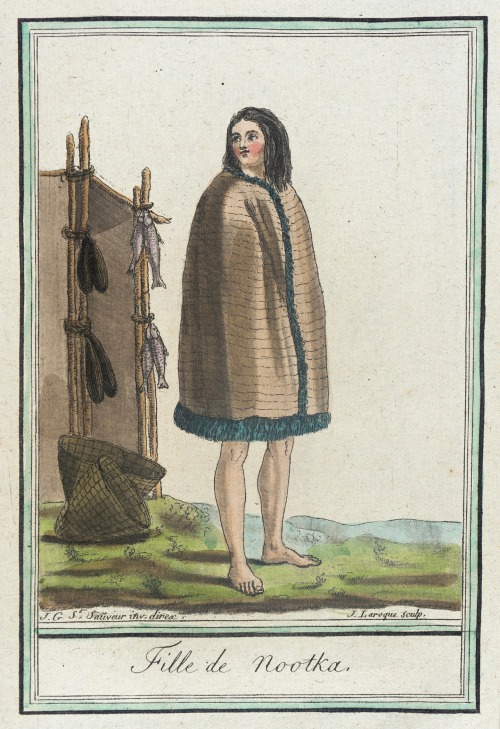
Crystal artifact said to be used to summon guests to feasts. Source: British Museum
Hmmm, coincidences. Two or three days ago I was having a beer with a recently graduated student of mine, who was telling me about a number of quartz crystal artifacts he had found in an excavation in the Fraser Valley. Now, artifacts made of quartz crystal are well known in the Gulf of Georgia — the nature of the rock makes it highly suitable for flaked stone tool production, especially microblades. Ethnographic accounts suggest they could also be used for sawing very tough rock types such as nephrite. However, the artifacts being described to me the other night included complete crystals with grooves around the bases — pendant-like, perhaps, or specialized abraders, or, well, or what?
Well, in a stunning display of “coincidence”, or a happy intervention from a raven, today I ran across just such a shiny little thing at the British Museum website. From their text, (which I cannot vouch for, having never heard of such a thing before):
The Nuu-chah-nulth believed that these crystals, or ha’ina, grew on the top of mountains and were endowed with magical qualities for bringing wealth and good fortune, for example, when hunting sea otter.
This ha’ina was collected by Captain George Dixon, who had accompanied Captain Cook on his Third Voyage (1776-80) to Vancouver Island. In 1785-88 Dixon made a trading voyage on the King George and Queen Charlotte which was promoted by the King George’s Sound Company (King George’s Sound was Captain Cook’s short-lived name for Nootka Sound on Vancouver Island, where this crystal was collected, probably from the Mowachaht people.)
The Nuu-chah-nulth used the ha’ina to invite people to potlatches, the great feasts given to celebrate life-cycle events at which hereditary rights were displayed. The invitation to a potlatch would take place at a gathering a year or two before the potlatch, when the crystal would be, metaphorically speaking, sent out to the prospective guests. They may have ‘sent’ this example to Dixon. Dixon was supported by Sir Joseph Banks in his work, and through Banks gave this ‘piece of rock crystal’ to the British Museum on 22 May 1789.
It would be sad and ironic (though not surprising) if this artifact was indeed an invitation never acknowledged, an unfulfilled RSVP, and if the gormless British had managed to interpret an invitation as a commodity and not as a request for honour, attendance and respect. It would be wrong on a number of levels to draw conclusions about the Fraser Valley examples, but it does show the potentially fuzzy boundaries between symbolic and functional material culture.
 The Archaeological Society of BC winter lecture series kicks off this Tuesday September 27th at the University of Victoria, with a talk by Dr.Pablo Restrepo-Gautier from UVIC’s Department of Hispanic and Italian Studies. Note that the talk is in a new room compared to last year: Cornett A129 – same building but on the south side. The text of the invite is below. The talk is free and open to the public. Prior to the meeting the ASBC will hold a short AGM.
The Archaeological Society of BC winter lecture series kicks off this Tuesday September 27th at the University of Victoria, with a talk by Dr.Pablo Restrepo-Gautier from UVIC’s Department of Hispanic and Italian Studies. Note that the talk is in a new room compared to last year: Cornett A129 – same building but on the south side. The text of the invite is below. The talk is free and open to the public. Prior to the meeting the ASBC will hold a short AGM.












